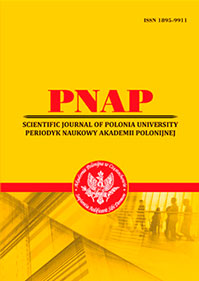ХТО ГОВОРИТЬ: ЛЮДИНА АБО МАШИНА?
Анотація
Стаття присвячена розгляду особливостей синтезу мовлення штучним інтелектом (ШІ) в аспекті лінгвальних відмінностей від природної генерації мовлення людиною. Вибір теми дослідження мотивовано розвитком комп’ютерних технологій і сучасної прикладної лінгвістики, які пов’язані з генерацією мовлення людини, а саме: обробці текстів природною мовою, ПМ (Natural Language Processing, NLP) і галузі робототехніки, яка є втіленим ШІ (embodied AI). Основна мета дослідження полягає у спробі встановлення формальних комунікативних відмінностей між генерацією машинного і природного мовлення на прикладі англомовного діалогу моделі людина-робот (Л-Р). Попри величезний теоретичний і практичний внесок лінгвістів і фахівців галузі комп’ютерних технологій щодо генерації машинної мови (Джозеф Вайценбаум, Роджер Шенк, Уїльям Аарон Вудс, Террі Виноград, Н. Хомський), багато аспектів залишаються не вирішеними. До них відносяться питання морфологічної омонімії (Morphological Disambiguation) англійської мови, обмеження граматики залежностей у розпізнаванні й синтезі складних синтаксичних структур (складносурядні та складнопідрядні речення), обмеження когнітивної системи сучасних роботів розпізнавати абстрактні поняття й категоризувати так звані «для цього випадку» (ad-hoc) поняття, що створює людина залежно від життєвої ситуації, розуміти метафоричні висловлювання як одне з найважливіших лінгвістичних явищ, що відображає наше мислення. У більш широкому сенсі головною проблемою залишається створення роботів, які здатні передбачувати соціальну поведінку людини, розуміти її фізичний та емоційний стан завдяки синхронній системі «людина-робот» (на противагу лише фізичній симуляції поведінки машинами). Наукова новизна статті полягає в з’ясуванні лінгво-гносеологічних відмінностей між природним і машинним мовленням. У результаті проведеної роботи конкретизовано поняття «штучний інтелект», розглянуто основні етапи синтезу машинного мовлення, відокремлені базові відмінності генерування штучного та природного англомовного діалогу.
Посилання
2. Близнюк Б.О. Современные методы обработки естественного языка. Вісник Харківського національного університету імені В.Н. Каразіна. 2017. № 36. С. 14–26.
3. Большакова Е.И. Автоматическая обработка текстов на естественном языке и компьютерная лингвистика : учебное пособие. Москва : МИЭМ, 2011. 269 с.
4. Eidenmueller H. The Rise of Robots and the Law of Humans. Oxford Legal Studies Research Paper. 2017. Vol. 27. 15 p. URL: https://papers.ssrn.com/sol3/papers.cfm?abstract_id=2941001.
5. Зильберман Н.Н. Функциональная классификация социальных роботов. Гуманитарная информатика. 2014. № 8. 31 с.
6. Зильберман Н.Н., Слободская А.В. Восприятие различных типов культурного интерфейса социального робота. Universum. 2014. № 10. С. 10–13.
7. Nakadai K., Takahashi T., Okuno HG. et al. Design and implementation of robot audition system ’hark’ open source software for listening to three simultaneous speakers. Advanced Robotics. 2010. Vol. 24. P. 739–761. URL: https://www.tandfonline.com/doi/abs/10.1163/016918610X493561.
8. Зильберман Н.Н., Стефанцова М.А. Социальный робот: подходы к определению понятия. Современные исследования социальных проблем. 2016. № 11 (67). С. 305.
9. Sophia: веб-сайт. URL: https://www.hansonrobotics.com/sophia/.
10. Cynthia Matuszek, Evan Herbst, Luke Zettlemoyer and Dieter Fox. Learning to Parse Natural Language Commands to a Robot Control System. Experimental Robotics. 2013. Vol. 88. P. 403–415.
11. Морозова І.Б. Парадигматичний аналіз структури і семантики елементарних комунікативних одиниць у світлі гештальт-теорії в сучасній англійській мові : монографія. Одеса : Друкарський дім, 2009. 384 с.
 ISSN
ISSN 


.png)



